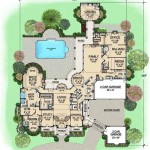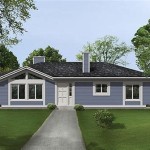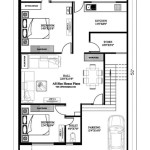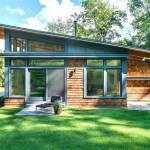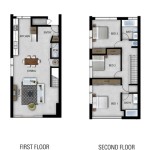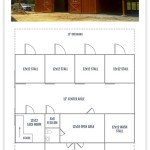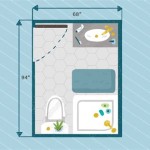300 Sq Ft ADU Plans: Maximizing Space and Functionality
Accessory Dwelling Units (ADUs), also known as granny flats, in-law suites, or backyard cottages, are gaining popularity as a means of addressing housing shortages, providing rental income, or accommodating family members. Among the various size options, the 300 square foot ADU represents a unique challenge and opportunity. Designing a functional and comfortable living space within such a compact footprint requires careful planning, innovative design solutions, and adherence to local building codes and regulations.
The 300 sq ft ADU plan necessitates a strategic approach to space optimization. Every square inch must be thoughtfully considered, and multi-functional elements are often essential. Prioritizing essential features like a sleeping area, kitchenette, bathroom, and a small living area is paramount. Furthermore, understanding local zoning ordinances regarding minimum unit sizes, setback requirements, and utility connections is crucial before embarking on the design and construction process.
This article delves into key considerations for 300 sq ft ADU plans, exploring design strategies, functional layouts, and regulatory aspects to provide a comprehensive understanding of how to create a successful small-scale living space.
Prioritizing Design and Layout for a 300 Sq Ft ADU
The design phase is crucial to the success of a 300 sq ft ADU. It is imperative to begin by considering the intended use of the space. Is it for a single occupant, a couple, or short-term rental purposes? Understanding the demographic and their needs will significantly influence the layout and features included. A well-defined needs assessment will guide decisions about storage requirements, kitchen functionality, and living area configuration.
The layout should prioritize an open concept design to maximize the feeling of spaciousness. This can be achieved by minimizing walls and creating a seamless flow between the sleeping, living, and kitchen areas. Vertical space should be emphasized to compensate for the limited square footage. Lofts can be incorporated for sleeping or storage, and tall cabinets can provide ample storage without consuming significant floor space. The strategic placement of windows and doors is also critical to ensuring natural light and ventilation, which can contribute to a more comfortable and inviting living environment.
Consider the orientation of the ADU on the property. Optimizing sunlight exposure can reduce the need for artificial lighting and heating, thereby lowering energy consumption. Furthermore, the location of the ADU should consider privacy for both the primary residence and the ADU occupant. Careful planning can minimize noise transmission and create a sense of separation between the two dwellings.
Color schemes also play a significant role in creating the illusion of space. Lighter colors tend to make a room feel larger and more open, while darker colors can make a space feel smaller and more enclosed. Using a consistent color palette throughout the ADU can contribute to a cohesive and harmonious design.
Furniture selection is another important aspect of the design process. Opt for multi-functional furniture, such as sofa beds, storage ottomans, and folding tables. These items can serve multiple purposes, reducing the need for separate pieces of furniture and maximizing the use of available space. Built-in storage solutions, like shelving and drawers, can also help to keep the ADU organized and clutter-free.
Functional Considerations: Kitchenette and Bathroom Design
The kitchenette and bathroom are essential components of any ADU, and their design requires careful attention to detail in a 300 sq ft space. The kitchenette should be functional and efficient, providing the necessary amenities for basic meal preparation without overwhelming the limited space. Consider using compact appliances, such as a small refrigerator, a two-burner stovetop, and a microwave. A combination convection oven/microwave can further reduce the footprint required. Ample counter space is crucial for food preparation, and innovative storage solutions, such as pull-out shelves and vertical organizers, can help to maximize storage capacity.
The bathroom design should prioritize functionality and efficiency. A small shower stall or a wet room design can save space compared to a traditional bathtub. A wall-mounted sink and toilet can also free up valuable floor space. Opt for a mirror that extends to the ceiling to create the illusion of a larger space. Good ventilation is essential in a small bathroom to prevent moisture buildup and mold growth. Consider installing a powerful exhaust fan and ensuring adequate natural ventilation through a window or skylight.
In both the kitchenette and bathroom, consider the placement of plumbing and electrical fixtures. Efficient routing of pipes and wires can minimize the space required for these systems, further optimizing the usable square footage. Pre-planning the location of outlets and switches is vital to ensure convenience and functionality. Consider incorporating energy-efficient fixtures and appliances to reduce energy consumption and lower utility bills.
Material selection is also important in both the kitchenette and bathroom. Durable and easy-to-clean materials are essential for maintaining these spaces in good condition. Consider using tile or vinyl flooring, which are water-resistant and easy to maintain. Solid surface countertops can provide a durable and aesthetically pleasing surface for food preparation and bathroom vanities.
Navigating Regulations and Permits for 300 Sq Ft ADUs
Before commencing any construction on a 300 sq ft ADU, it is crucial to thoroughly research and understand local zoning regulations, building codes, and permit requirements. ADU regulations vary significantly depending on the jurisdiction, and failure to comply with these regulations can result in costly delays, fines, or even the removal of the ADU.
Zoning regulations typically specify the minimum and maximum sizes for ADUs, setback requirements, parking requirements, and height restrictions. Ensure that the proposed 300 sq ft ADU complies with all applicable zoning regulations. Building codes specify the minimum standards for construction, including structural integrity, fire safety, plumbing, electrical, and mechanical systems. Adherence to these codes is essential to ensure the safety and well-being of the occupants.
The permit process typically involves submitting detailed architectural plans, site plans, and engineering calculations to the local building department. The plans will be reviewed to ensure compliance with zoning regulations and building codes. Obtaining the necessary permits can take several weeks or even months, so it is important to start the process well in advance of the planned construction start date. Consider hiring a qualified architect or contractor who is familiar with local ADU regulations and permit requirements.
In addition to zoning regulations and building codes, consider potential impact fees or utility connection fees. These fees can vary depending on the jurisdiction and the size of the ADU. Factor these costs into the overall budget for the project. Furthermore, understand any restrictions on renting out the ADU. Some jurisdictions may have restrictions on short-term rentals or require that the ADU be occupied by a family member.
Thoroughly research and understand the specific regulations and requirements in the local jurisdiction before embarking on the construction of a 300 sq ft ADU. Compliance with these regulations is essential to ensure a successful and legally compliant project.
Designing a 300 sq ft ADU requires a meticulous approach to space planning, material selection, and regulatory compliance. By prioritizing design, maximizing functionality, and diligently navigating the permitting process, it is possible to create a comfortable and valuable addition to any property.

300 Sq Ft Tiny House Floor Plans Houseplans Blog Com

Floor Plans Housing Forward Humboldt Building Our Community Together

300 400 Sq Ft Archives Homeplex

42 300 Sf Granny Flat Ideas Tiny House Floor Plans

Floor Plans Housing Forward Humboldt Building Our Community Together

300 Sq Ft Tiny House Floor Plans Houseplans Blog Com

Floor Plans Housing Forward Humboldt Building Our Community Together

300 Square Feet Adu Open Concept

4 Adu Floor Plans That Will Maximize Your Property Maxable

Floor Plans Housing Forward Humboldt Building Our Community Together

